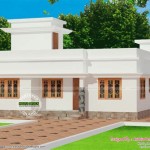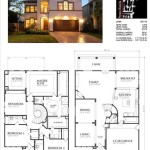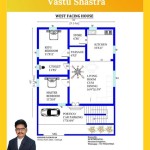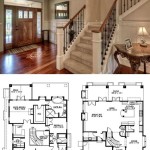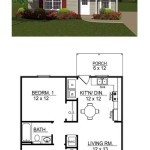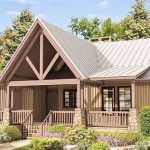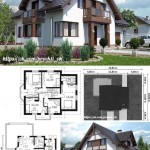Building a Hobbit House: Planning Permission and Practical Considerations
The allure of a hobbit hole, burrowed into a hillside, is undeniable. It evokes a sense of cozy comfort, a connection to nature, and a unique, charming aesthetic. While the dream of living in such a dwelling may seem whimsical, building a hobbit house is a real possibility, albeit one that requires careful planning and adherence to local regulations. Understanding planning permission requirements and the practical considerations involved is crucial to successfully navigating this journey.
Navigating Planning Permission Regulations
The first hurdle in building a hobbit house is obtaining planning permission. This is a legal requirement in most areas, ensuring that construction aligns with local planning policies and does not negatively impact the surroundings. The process for obtaining planning permission can vary depending on the location, but generally involves submitting a detailed application that includes plans, elevations, and a statement explaining the proposed development's impact on the surrounding environment.
Here are some key aspects to consider when seeking planning permission for a hobbit house:
- Permitted Development Rights: Some minor building projects might fall under permitted development rights, which allow for certain constructions without needing full planning permission. However, hobbit houses, due to their unique design and potential for changing the character of the property, are unlikely to qualify for these rights.
- Design and Aesthetics: Planners will assess the proposed design and its impact on the visual amenity of the area. The hobbit house should be sympathetic to the surrounding environment and not detract from the character of the neighborhood.
- Site Suitability: The location and the site's suitability for a hobbit house will be considered. Factors like slope, soil conditions, and proximity to existing structures will be assessed. Planners might require surveys to evaluate the site's viability.
- Impact on Amenities: The proposed development's impact on existing amenities, such as access to light, views, and privacy for neighboring properties, will be taken into account. Planners may require mitigating measures to address any potential negative impacts.
- Access and Services: Planners will consider the access to the proposed site, including road access, parking, and the ability to connect utilities, such as electricity and water.
Practical Design Considerations
Once planning permission is secured, the focus shifts to the practicalities of designing and building a hobbit house. Several considerations come into play:
- Structural Integrity: The unique shape and construction of a hobbit house present structural challenges. Careful consideration needs to be given to the design and materials used to ensure the structure's stability and longevity. Reinforced concrete or steel can be used for the foundations and framing, while traditional building materials like stone or wood can be used for the exterior.
- Insulation and Energy Efficiency: Creating a comfortable living space in a hobbit house requires careful planning for insulation and energy efficiency. The design can incorporate earth berming, where soil is piled against the walls, providing natural insulation. Additional insulation can be added to the roof and walls. The use of energy-efficient windows and appliances can further enhance the building's energy performance.
- Ventilation and Moisture Control: Due to the partially underground nature of a hobbit house, ventilation and moisture control are crucial. Adequate ventilation systems need to be installed to prevent moisture build-up and ensure fresh air circulation. Proper drainage and waterproofing are also essential to prevent water ingress.
- Natural Light: Maximizing natural light in a hobbit house requires careful planning. Skylights, large windows, and strategically placed openings can bring in sunlight and create a brighter living space. The use of reflective surfaces to bounce light can enhance the effect.
- Living Space Arrangement: The interior layout of a hobbit house needs to be considered carefully to make the most of the available space. Creative use of built-in furniture, multi-functional rooms, and clever storage solutions can maximize functionality. The curved walls and low ceilings can add a unique character to the living spaces.
Engaging Experienced Professionals
Planning permission and designing a hobbit house are complex processes that require expertise. It is highly recommended to engage with professionals who have experience in these areas. Architects, structural engineers, and building contractors can provide invaluable guidance and ensure that the project complies with regulations and meets the necessary standards for safety and longevity.
Working with professionals who have experience in unique and challenging projects like building a hobbit house can be beneficial. They can provide innovative solutions, address potential problems proactively, and ensure the project's success.

Hobbit Hole Style Holiday Home Scheme Plans For Conwy Valley North Wales Live

Hobbit Hole Style Holiday Home Scheme Plans For Conwy Valley North Wales Live

Family Win Three Year Planning Battle To Live In Pembrokeshire Hobbit House Daily Mail

Family Win Three Year Planning Battle To Live In Pembrokeshire Hobbit House Daily Mail

Building A Hobbit House For Under 5 000

Planners Approve Mid Wales Hobbit Homes Cambrian News Co

A Chance To Invest In Hobbit Hole Property The Guardian

Hobbit Homes In Welsh Countryside Secure Planning Go Ahead North Wales Live

Mud Building Blog The Home

Pull Down Your Hobbit Home Couple Told Eco House Made From Straw And Wood Is Harmful To Countryside Daily Mail

